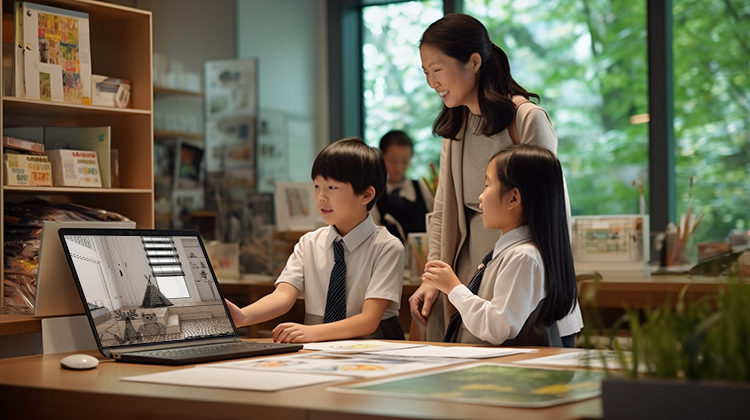In the last article, Superintendent Haishuo Lee shared his thoughts on what basic technological equipment and infrastructure schools should plan on acquiring and the challenges of adopting these technologies in teaching in schools. We’ll continue to learn more about the core competencies that Superintendent Lee believes to be the most important skills in this era.
Q: What are some of the most important things for students to learn in the era of generative AI? How does Wagor ensure that students acquire these capabilities?

Indeed, this is a great issue for educators to tackle. I’ve done a lot of research on this domain since it poses such a huge impact on the next generation. Though most people may think the most important skill is the skill of learning how to operate AI and other technologies, please allow me to quote Jeff Bezos, the CEO of Amazon. He once said that the long-term trend is the only area you should invest your time and energy in because that is how you make sure you end up on the right path in the end. A lot of people define Amazon as an online store, which is not the whole picture at all. Bezos actually invested in the internet industry, in which one of the most lucrative services of Amazon is Amazon Web Services (AWS), a web hosting service. Bezos knew that a lot of different competitors would enter the online store market, but if you get hold of the internet web services, the most fundamental thing for all internet users, you’ll hold a lot more power.
With all this being said, what is the “long-term” skill we need to teach to students? Imagine this scenario where we all have similar skill sets in using Midjourney, all knowing the correct way to prompt and knowing the channel thoughts, and channel density. That would mean that if we all tried to create an image, the resulting image may be extremely similar in quality. But I remember a few months back, I saw an incredible piece of AI-generated artwork. The artist’s idea was to generate selfies of historical figures who are no longer with us, like Mother Theresa, Elvis Presley, Einstein, Lincoln, and Gandhi. I imagine the amount of thought that went into creating every single detail in the artwork, all being described in the prompt with incredible clarity. That was all in the mind of the person who thought up the idea. The most important thing is the very original, artistic thought that that artist had: that is the key.
More than the ability to utilize the software, I want our students to have that kind of creativity. So I would argue that digital competence is very important, but this foundational competence—the essence of creativity—is much more valuable. Many different organizations are becoming aware of this. For example, the Skills Builder Partnership proposed eight core competencies that help people survive the artificial intelligence era. McKinsey and Company found 56 foundational skills for all citizens to have in the future. Minerva University, my current university, highlights 80 skills. These skills often overlap, applicable to all types of cultures and perspectives in the world.
The skills are taught in Western classrooms but less so in Eastern classrooms. I’ll explain through an example. There is an AI GC tool called Interior.ai: you take a picture of a room, upload the picture to the website, and then receive an interior design for the room. Many schools, when teaching this to their students, will have students choose a corner of the school or in their own home to come up with designs for, and for the more adventurous schools, they may allow students to implement those changes to said location.
These are all wonderful things to do, but I want to share how Wagor does this. Because we believe fervently in soft skills, our elementary students must reach out to real-life interior designers to ask how much the design they generated would cost. When asked this question, many students naively guessed their designs to be around NT$20,000 (approximately US$600), which is only a fraction of the price it would cost. When given the real answer by interior designers, students realize there is a huge gap in their understanding and the reality of the world. Aside from learning how to use the AI GC tool, students begin developing soft skills starting from finding and reaching out to an interior designer willing to answer this question, and then communicating with the designer, which all take a significant amount of courage for an elementary school student. Finally, after consulting the professional, the student must go back to the classroom, and persuade other students why their room design is better, cultivating skills in persuasion and elaboration. To us, that is a valuable, comprehensive learning experience.
Q: Is there anything else you’d like to mention regarding education in this era?

Even though our school focuses on technological education, we firmly believe that technology is simply a facilitation of humanity. If technology did not help our society bloom and prosper, then we would just shy away from technology. However, it seems evident that technology is fully capable of assisting us to save time and energy while achieving more. Taking interior once again as an example, you take a picture and immediately you’d have a simulation and something to discuss. These technologies become great tools to foster our students’ soft skills, so my suggestion to every single school is that soft skills are what truly matters in these coming years.